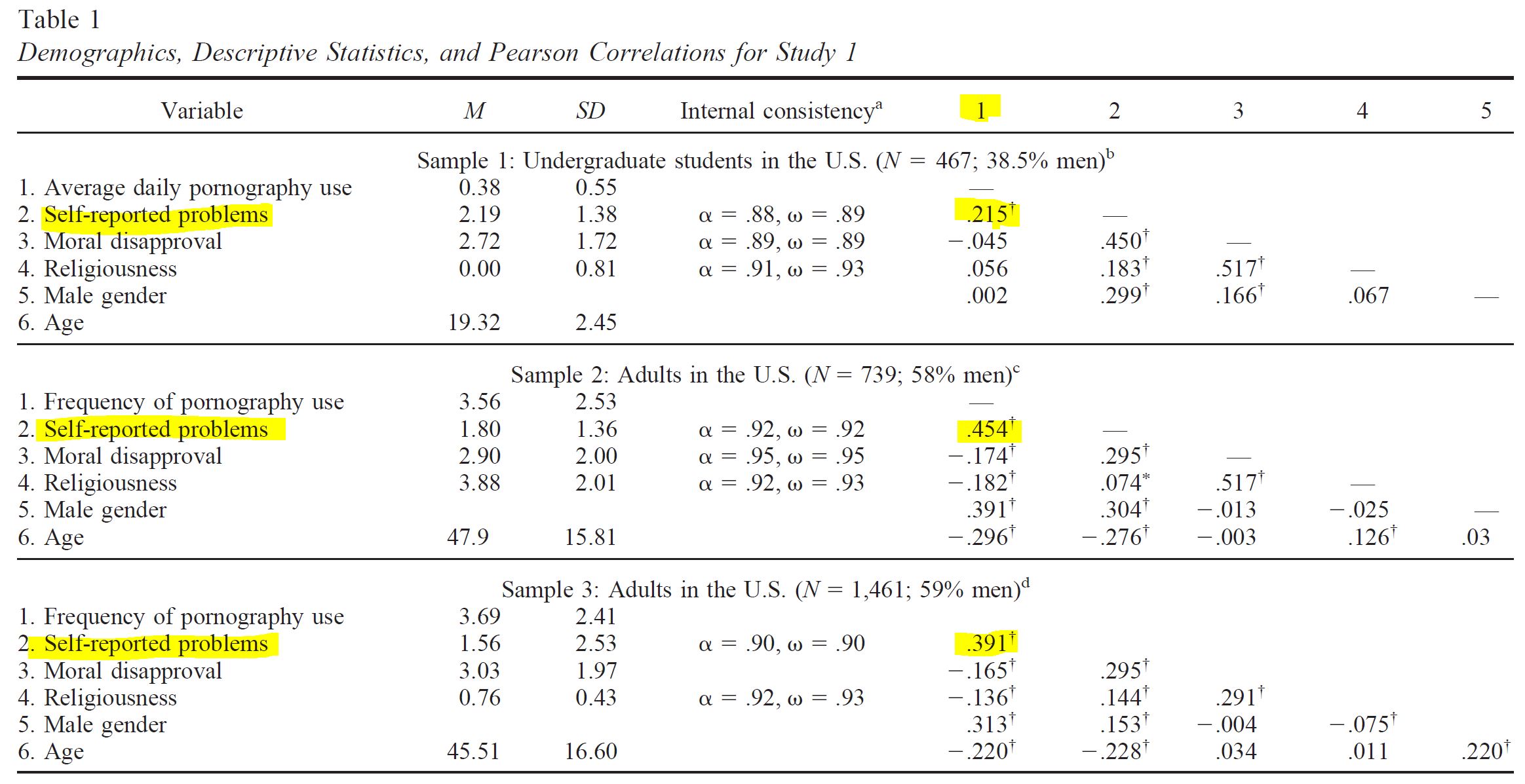David Ludden’s Psychology Today blog post claims to be about this Joshua Grubbs study: Moral incongruence and compulsive sexual behavior: Results from cross-sectional interactions and parallel growth curve analyses. Not surprisingly, Grubbs’s own abstract doesn’t accurately reflect the study’s actual findings: porn addiction correlates most strongly with porn use (not “moral disapproval” or “religiosity”). Grubbs is master at clever spin and a creator of biased writes-ups.
Ludden’s primary assertion can be summed by its subtitle:
It’s a problem if you think it’s one.
The entire premise of Ludden’s article is based on a false assertion. He falsely claims that in Grubbs’s study, porn use did NOT correlate with “self-perception of it being problematic” (as assessed by the CPUI-4, a porn addiction questionnaire). He asserts:
The results were as the researchers expected. Specifically, frequency of pornography use in itself didn’t correlate with the self-perception of it being problematic.
In reality, levels of pornography use was the variable correlating most strongly “self-perception of it being problematic.” Much more strongly than religiosity or moral disapproval. In short, the very opposite of Ludden’s statement.
GRAPH FROM THE GRUBBS STUDY: Column number 1 (along the top) is porn use. The highlighted numbers are correlations between porn use and self reported problems (used the CPUI-4). As you can see, porn use (average daily use or frequency) was the best predictor of “self-perception of [porn use] being problematic.”

No doubt Ludden’s PT blog post will be cited over and over again as an accurate portrayal of the underlying research, even though it is misleading fiction.